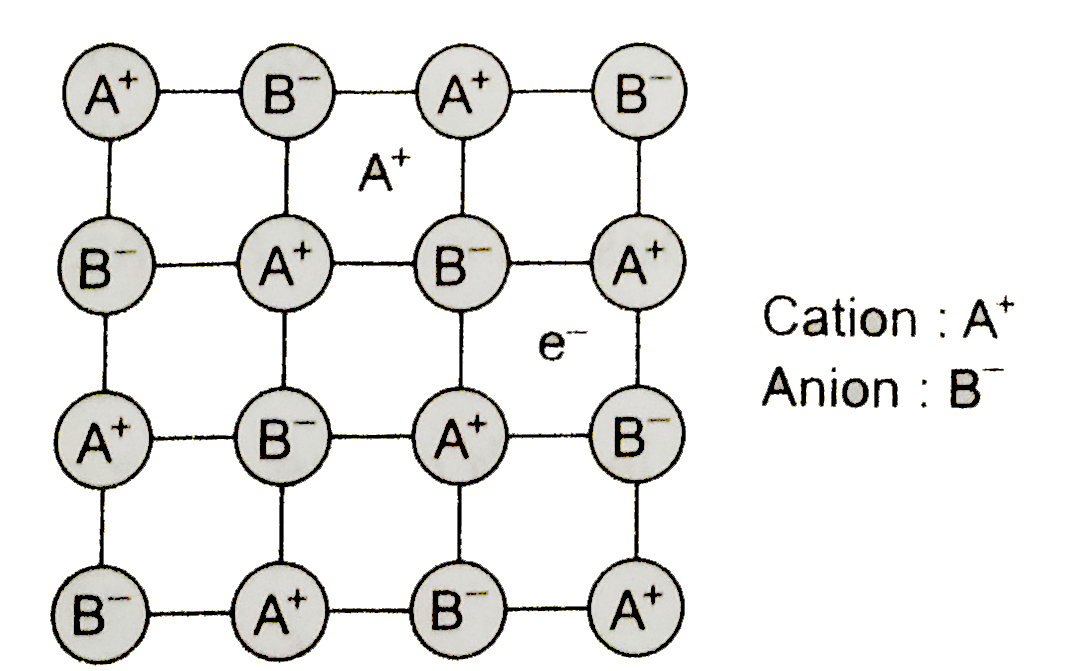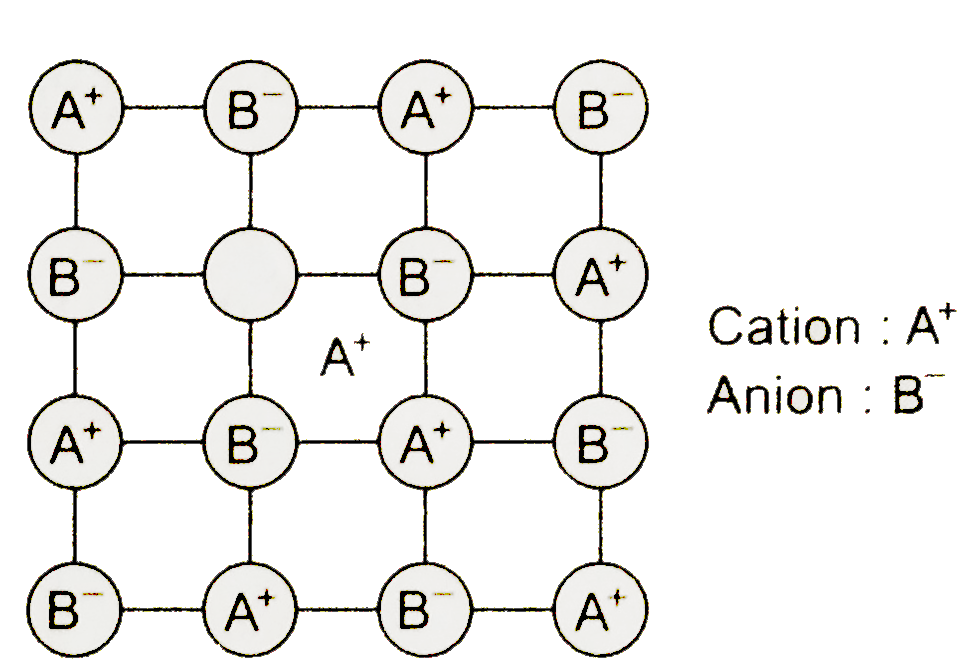The lattice site in a pure crystal cannot be occupied by :
molecule
ion
electron
atom
The correct Answer is:C
To solve the question "The lattice site in a pure crystal cannot be occupied by:", we need to analyze the options provided and understand the concept of lattice sites in a crystal structure.
1. Understanding Lattice Sites:
- A crystal lattice is a three-dimensional arrangement of points that represent the positions of atoms, ions, or molecules in a crystal. Each point in the lattice is called a lattice site.
2. Identifying Possible Occupants of Lattice Sites:
- Lattice sites can be occupied by:
- Atoms: These are the basic building blocks of matter and can occupy lattice sites in a crystal.
- Ions: Charged particles (cations and anions) can also occupy lattice sites, especially in ionic crystals.
- Molecules: In molecular crystals, entire molecules can occupy lattice sites.
3. Analyzing the Options:
- Given options are:
- A) Molecule
- B) Ion
- C) Electron
- D) Atom
- From our understanding, options A, B, and D (molecule, ion, and atom) can occupy lattice sites.
4. Identifying the Incorrect Option:
- Electrons: Electrons are subatomic particles that exist within atoms and do not occupy lattice sites. They are not discrete entities that can be placed at specific points in a crystal lattice. Instead, they are found in orbitals around the nucleus of an atom.
5. Conclusion:
- Therefore, the correct answer to the question is that the lattice site in a pure crystal cannot be occupied by an electron.
Final Answer:
The lattice site in a pure crystal cannot be occupied by: Electron (Option C).
- A crystal lattice is a three-dimensional arrangement of points that represent the positions of atoms, ions, or molecules in a crystal. Each point in the lattice is called a lattice site.
- Lattice sites can be occupied by:
- Atoms: These are the basic building blocks of matter and can occupy lattice sites in a crystal.
- Ions: Charged particles (cations and anions) can also occupy lattice sites, especially in ionic crystals.
- Molecules: In molecular crystals, entire molecules can occupy lattice sites.
- Given options are:
- A) Molecule
- B) Ion
- C) Electron
- D) Atom
- From our understanding, options A, B, and D (molecule, ion, and atom) can occupy lattice sites.
- Electrons: Electrons are subatomic particles that exist within atoms and do not occupy lattice sites. They are not discrete entities that can be placed at specific points in a crystal lattice. Instead, they are found in orbitals around the nucleus of an atom.
- Therefore, the correct answer to the question is that the lattice site in a pure crystal cannot be occupied by an electron.
The lattice site in a pure crystal cannot be occupied by: Electron (Option C).
Topper's Solved these Questions
- SOLID STATEBOOK - NCERT EXEMPLAR ENGLISHCHAPTER - SOLID STATEEXERCISE - short answer type Questions
19 Videos
- SOLID STATEBOOK - NCERT EXEMPLAR ENGLISHCHAPTER - SOLID STATEEXERCISE - matching the columns
1 Videos
- POLYMERBOOK - NCERT EXEMPLAR ENGLISHCHAPTER - POLYMEREXERCISE - Long Answer Type Question
5 Videos
- SOLUTIONS BOOK - NCERT EXEMPLAR ENGLISHCHAPTER - SOLUTIONS EXERCISE - LONG ANSWER TYPE QUESTIONS
8 Videos
Similar Questions
Knowledge Check
When the anionic sites of a crystal are occupied by unpaired electrons, the ionic sites are called............ In diamond inter-particle forces are ......
AF-centres, covalent bondsBF-centres, ionic bondsCCationic, ionic bondsDAnionic, covalent bonds
In a face centred lattice with all the positions occupied by A atoms the body centred octahedral hole in it is occupied by an atom B of an appropriate size for such a crystal, calculate the void space per unit volume of unit cell. Also predict the formula of the compound.
View SolutionIn a covalent solid the lattice points are occupied by
View SolutionThe defect when an ion occupies an interstitial position in the crystal lattice is called
View SolutionA compound of A and B crystallizes in a cubic lattice in which A atoms occupy the lattice points at the corners of a cube and two atoms of B occupy the center of each of the cube faces. What is the formula of this compound?
View SolutionIonic lattic has two major points defects ,(1) Schottky (2) Frenkel defects . Schottkly defects occurs due to the cations - anion pair's missing from the lattice sites . Frenkel defects occurs when cation leaves its lattice site and fits into an interstitial space. The neutrality of the crystal is being maintained and we considered all losses from interstitial positions.
which defect decrease density of the crystal ?
View SolutionIonic lattic has two major points defects ,(1) Schottky (2) Frenkel defects . Schottkly defects occurs due to the cations - anion pair's missing from the lattice sites . Frenkel defects occurs levels its lattic site and fits into an intersitial space. The neturaity of the crystal is benig maintained and we considerd all losses from interstitical positions.
Structure shown here represents :

View SolutionIonic lattic has two major points defects ,(1) Schottky (2) Frenkel defects . Schottkly defects occurs due to the cations - anion pair's missing from the lattice sites . Frenkel defects occurs levels its lattic site and fits into an intersitial space. The neturaity of the crystal is benig maintained and we considerd all losses from interstitical positions.
Structure shown here represents :

View Solution
